
NGC 7038 is an intermediate spiral galaxy located about 210 million light-years away in the constellation of Indus. Astronomer John Herschel discovered NGC 7038 on September 30, 1834.
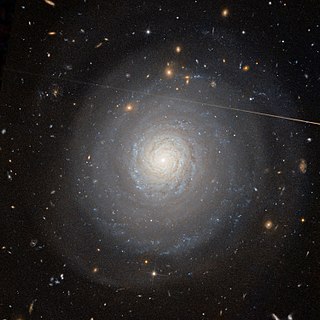
MCG +07-33-027 is an isolated spiral galaxy located about 330 million light-years away in the constellation Hercules. It has a very high rate of star formation which would make it a starburst galaxy. Normally, starburst galaxies are triggered by the collision of another galaxy. However most galaxies are in groups or clusters, while MCG +07-33-027 is solitary. Therefore, the cause of the starburst was not due to a collision or by the passing of a nearby galaxy and so the cause of the activity remains unknown.

NGC 4540 is a spiral galaxy with type 1 Seyfert activity located about 64 million light-years away in the constellation Coma Berenices. NGC 4540 was discovered by astronomer William Herschel on March 21, 1784 and is a member of the Virgo Cluster.

NGC 6045 is a barred spiral galaxy located about 450 million light-years away in the constellation Hercules. NGC 6045 was discovered by astronomer Lewis Swift on June 27, 1886 and is a member of the Hercules Cluster. It is also a LINER galaxy.

NGC 1264 is a low-surface-brightness barred spiral galaxy located about 145 million light-years away in the constellation Perseus. The galaxy was discovered by astronomer Guillaume Bigourdan on October 19, 1884. NGC 1264 is a member of the Perseus Cluster.
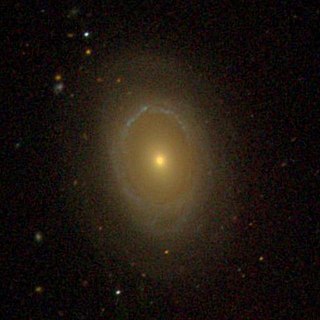
NGC 3884 is a spiral galaxy located about 330 million light-years away in the constellation Leo. The galaxy was discovered by astronomer William Herschel on April 27, 1785 and is a member of the Leo Cluster.
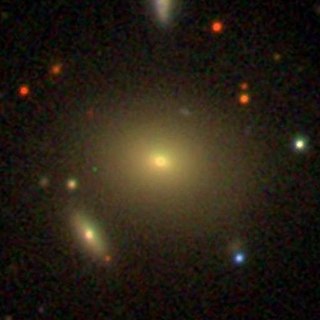
NGC 6158 is an elliptical galaxy located about 400 million light-years away in the constellation Hercules. The galaxy was discovered by astronomer William Herschel on March 17, 1787 and is a member of Abell 2199.

NGC 710 is a spiral galaxy located 260 million light-years away in the constellation Andromeda. It was discovered by the Irish engineer and astronomer Bindon Blood Stoney on October 28, 1850 and is a member of the galaxy cluster Abell 262.

NGC 753 is a spiral galaxy located 220 million light-years away in the constellation Andromeda. The galaxy was discovered by astronomer by Heinrich d'Arrest on September 16, 1865 and is a member of Abell 262.
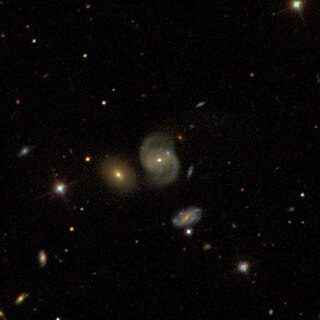
IC 4461 is a spiral galaxy located in the Boötes constellation, located at distance of 417 million light-years from both the Milky Way and Andromeda Galaxy.

IC 5337 or JW100, is a spiral galaxy located 800 million light-years away from the Solar System in the constellation of Pegasus.

NGC 5008 is a massive barred spiral galaxy located in the Boötes constellation.

NGC 6331 is a type E elliptical galaxy located in the Ursa Minor constellation. It is located 737 million light-years from the Solar System and was discovered by German-British astronomer William Herschel on December 20, 1797, utilizing an 18.7-inch f/13 spectrum telescope but also observed by Guillaume Bigourdan.

IC 4537 is a type S0-a lenticular galaxy located in the Serpens constellation. It is located 736 million light-years from the Solar System and was discovered by astronomer Edward Emerson Barnard although the year of discovery was unknown. IC 4537 has a surface brightness of magnitude 23.9 and a right ascension of and declination. IC 4537 is apparently located a few miles away from the globular cluster Messier 5.

IC 1166 are a pair of galaxies in the Corona Borealis constellation comprising IC 1166 NED01 and IC 1166 NED02. They are located 977 million light-years from the Solar System and were discovered on July 28, 1892, by Stephane Javelle.

IC 1182 is a type S0-a lenticular galaxy located in Hercules. It is located 464 million light-years away from the Solar System and was discovered on August 11, 1892, by Stephane Javelle. IC 1198 is a member of the Hercules Cluster, which is a part of the CfA 2 Great Wall.
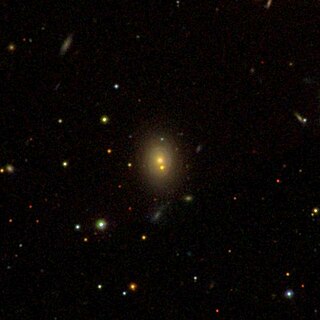
IC 1185 is a type Sab spiral galaxy located in Hercules. It is located 420 million light-years from the Solar System and has an approximate diameter of 115,000 light-years. IC 1185 was discovered on June 8, 1888, by astronomer Guillaume Bigourdan and is a member of the Hercules Cluster. IC 1185 has a surface brightness of magnitude 22.7 and presents a double nucleus, which might represent a late stage of galaxy merger.
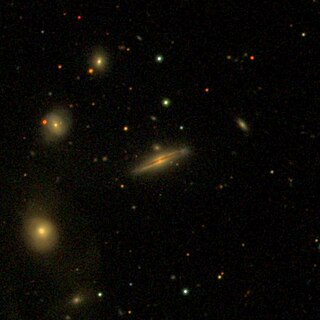
IC 1192 is an edge-on barred spiral galaxy located in Hercules. It is located 543 million light-years from the Solar System and has a diameter of approximately 90,000 light-years. IC 1192 was discovered by Stephane Javelle on August 13, 1892. It is a member of the Hercules Cluster.

IC 1296 is an extremely faint barred spiral galaxy of Hubble-type SBbc in the constellation Lyra in the northern sky. It is estimated to be 238 million light-years from the Milky Way and about 120,000 light-years in diameter.



















